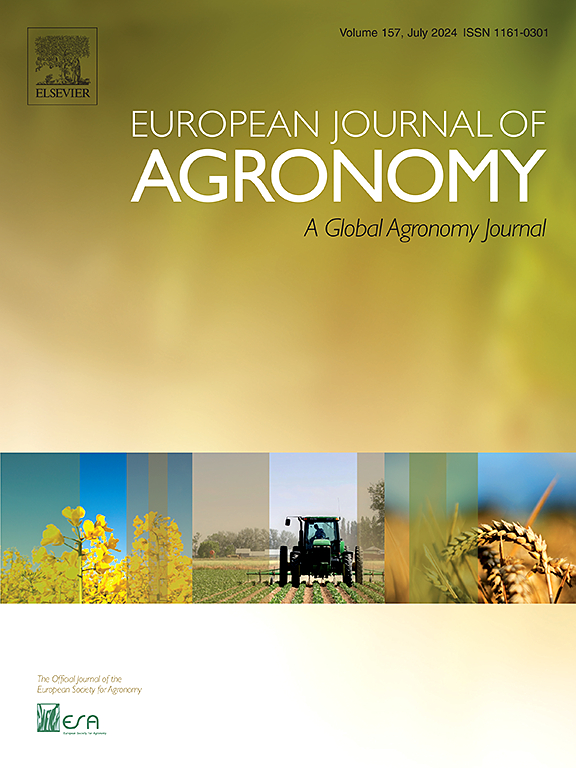Response to nitrogen fertilization of late-sown maize upon different winter previous crops
IF 4.5
1区 农林科学
Q1 AGRONOMY
引用次数: 0
Abstract
Agriculture is transitioning towards more sustainable ways of producing food, fiber, and biofuels, with practices aimed at conserving soil resources by prolonging soil occupation with cash or cover crops and balancing the proportion of cereals and winter legumes when increasing the number of crops in the rotation. Likewise, closing nutrient biogeochemical cycles is critical, particularly for N, which requires adjusting fertilizer rates to avoid surplus or soil mining. Winter crops for grain such as wheat (Triticum aestivum L.), pea (Pisum sativum L.), and for cover such as vetch (Vicia sativa L. or Vicia villosa L.) can differentially affect nitrogen (N) dynamics, yield response to N application, and associated efficiency metrics in succeeding late-sown maize (Zea mays L.). This study aimed to (i) quantify maize yield response to N fertilization by considering productivity, economic, and N efficiency metrics in late-sown maize following fallow or composing a double-crop after winter cash crops (wheat and field pea) or cover crop (vetch) and (ii) test whether vetch biomass can be used to predict the response to N fertilization. Forty on-farm trials were conducted under rainfed conditions in the Pampas region of Argentina during 13 seasons to test different N rates on late-sown maize yields growing after fallow, wheat, pea, or vetch. Maize grain yield was determined, and the agronomic and economic optimum N rates (AONR and EONR, kg fertilizer N ha−1), N use efficiency (NUE, kg of grain yield response per kg of N from fertilizer), and partial factor productivity (PFP, kg of grain produced per kg of N from fertilizer) were calculated. The results showed that (i) wheat caused a higher frequency (86 %) of yield response to N application in maize compared to other scenarios (average 60 %); (ii) no yield response to N was observed when soil N availability at sowing exceeded 175 kg N ha⁻¹ , regardless of the previous crop; (iii) maize following wheat showed the highest AONR and EONR, while maize following pea showed the lowest; (iv) there were no significant differences in NUE among winter crops, but the lowest PFP was observed after wheat; and (v) vetch biomass and N accumulation helped predict the yield response to N fertilization in the succeeding maize. We conclude that winter crops and their characteristics (e.g., wheat yield and vetch biomass) should be considered to fine-tune N fertilizer rates in late-sown maize, promoting the sustainability of the cropping system.
求助全文
约1分钟内获得全文
求助全文
来源期刊

European Journal of Agronomy
农林科学-农艺学
CiteScore
8.30
自引率
7.70%
发文量
187
审稿时长
4.5 months
期刊介绍:
The European Journal of Agronomy, the official journal of the European Society for Agronomy, publishes original research papers reporting experimental and theoretical contributions to field-based agronomy and crop science. The journal will consider research at the field level for agricultural, horticultural and tree crops, that uses comprehensive and explanatory approaches. The EJA covers the following topics:
crop physiology
crop production and management including irrigation, fertilization and soil management
agroclimatology and modelling
plant-soil relationships
crop quality and post-harvest physiology
farming and cropping systems
agroecosystems and the environment
crop-weed interactions and management
organic farming
horticultural crops
papers from the European Society for Agronomy bi-annual meetings
In determining the suitability of submitted articles for publication, particular scrutiny is placed on the degree of novelty and significance of the research and the extent to which it adds to existing knowledge in agronomy.
 求助内容:
求助内容: 应助结果提醒方式:
应助结果提醒方式:


